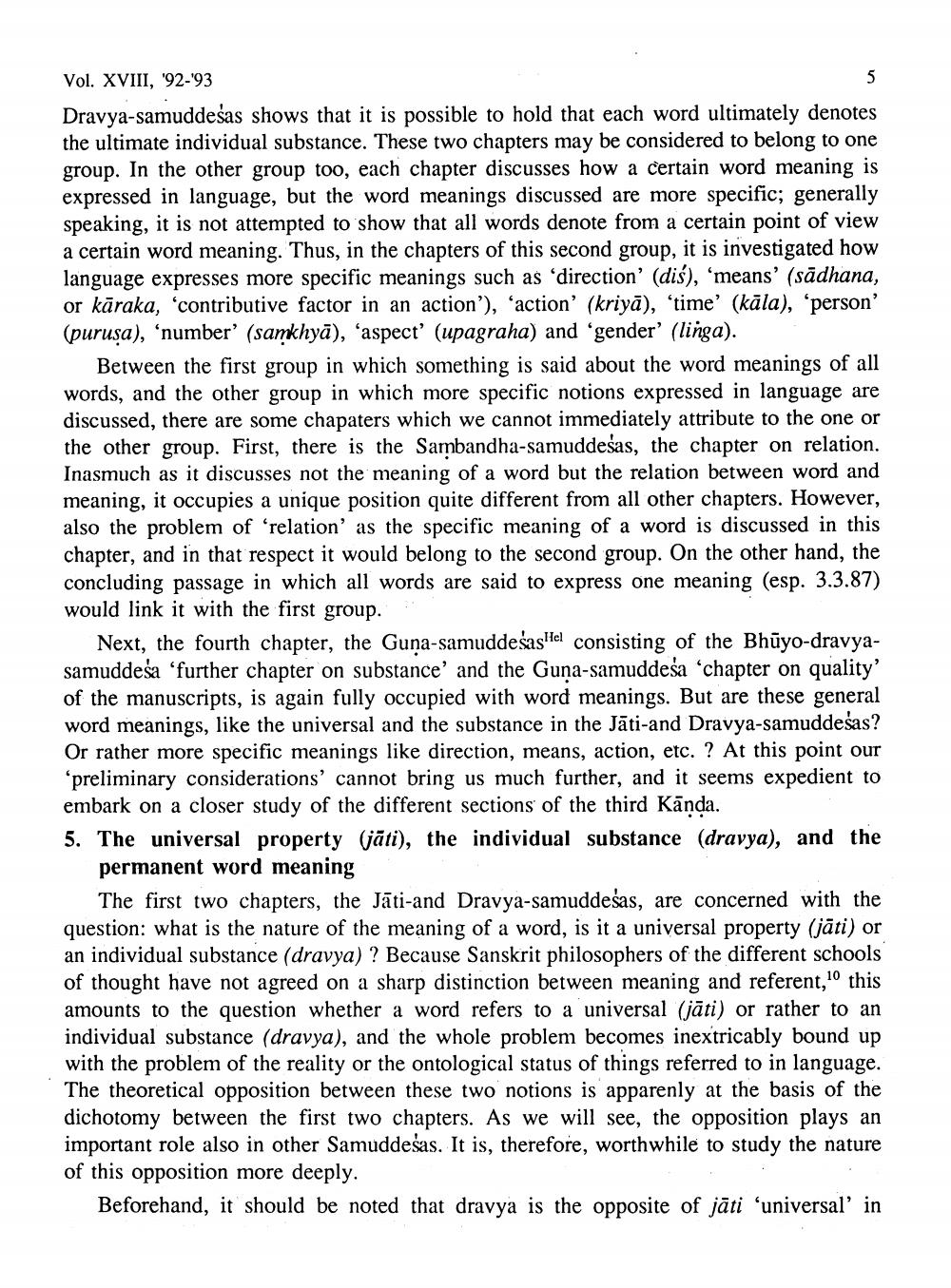________________
Vol. XVIII, '92-'93 Dravya-samuddešas shows that it is possible to hold that each word ultimately denotes the ultimate individual substance. These two chapters may be considered to belong to one group. In the other group too, each chapter discusses how a certain word meaning is expressed in language, but the word meanings discussed are more specific; generally speaking, it is not attempted to show that all words denote from a certain point of view a certain word meaning. Thus, in the chapters of this second group, it is investigated how language expresses more specific meanings such as 'direction' (dis), 'means' (sādhana, or kāraka, 'contributive factor in an action'), 'action' (kriyā), 'time' (kāla), 'person' (purusa), 'number' (samkhyā), 'aspect' (upagraha) and 'gender (linga).
Between the first group in which something is said about the word meanings of all words, and the other group in which more specific notions expressed in language are discussed, there are some chapaters which we cannot immediately attribute to the one or the other group. First, there is the Sambandha-samuddesas, the chapter on relation. Inasmuch as it discusses not the meaning of a word but the relation between word and meaning, it occupies a unique position quite different from all other chapters. However, also the problem of relation as the specific meaning of a word is discussed in this chapter, and in that respect it would belong to the second group. On the other hand, the concluding passage in which all words are said to express one meaning (esp. 3.3.87) would link it with the first group.
Next, the fourth chapter, the Guna-samuddesasHel consisting of the Bhūyo-dravyasamuddesa ‘further chapter on substance and the Guņa-samuddesa ‘chapter on quality' of the manuscripts, is again fully occupied with word meanings. But are these general word meanings, like the universal and the substance in the Jāti-and Dravya-samuddešas? Or rather more specific meanings like direction, means, action, etc. ? At this point our 'preliminary considerations' cannot bring us much further, and it seems expedient to embark on a closer study of the different sections of the third Kānda. 5. The universal property (jāti), the individual substance (dravya), and the
permanent word meaning
The first two chapters, the Jāti-and Dravya-samuddesas, are concerned with the question: what is the nature of the meaning of a word, is it a universal property (jāti) or an individual substance (dravya)? Because Sanskrit philosophers of the different schools of thought have not agreed on a sharp distinction between meaning and referent,to this amounts to the question whether a word refers to a universal (jāti) or rather to an individual substance (dravya), and the whole problem becomes inextricably bound up with the problem of the reality or the ontological status of things referred to in language. The theoretical opposition between these two notions is apparenly at the basis of the dichotomy between the first two chapters. As we will see, the opposition plays an important role also in other Samuddesas. It is, therefore, worthwhile to study the nature of this opposition more deeply.
Beforehand, it should be noted that dravya is the opposite of jāti 'universal' in




